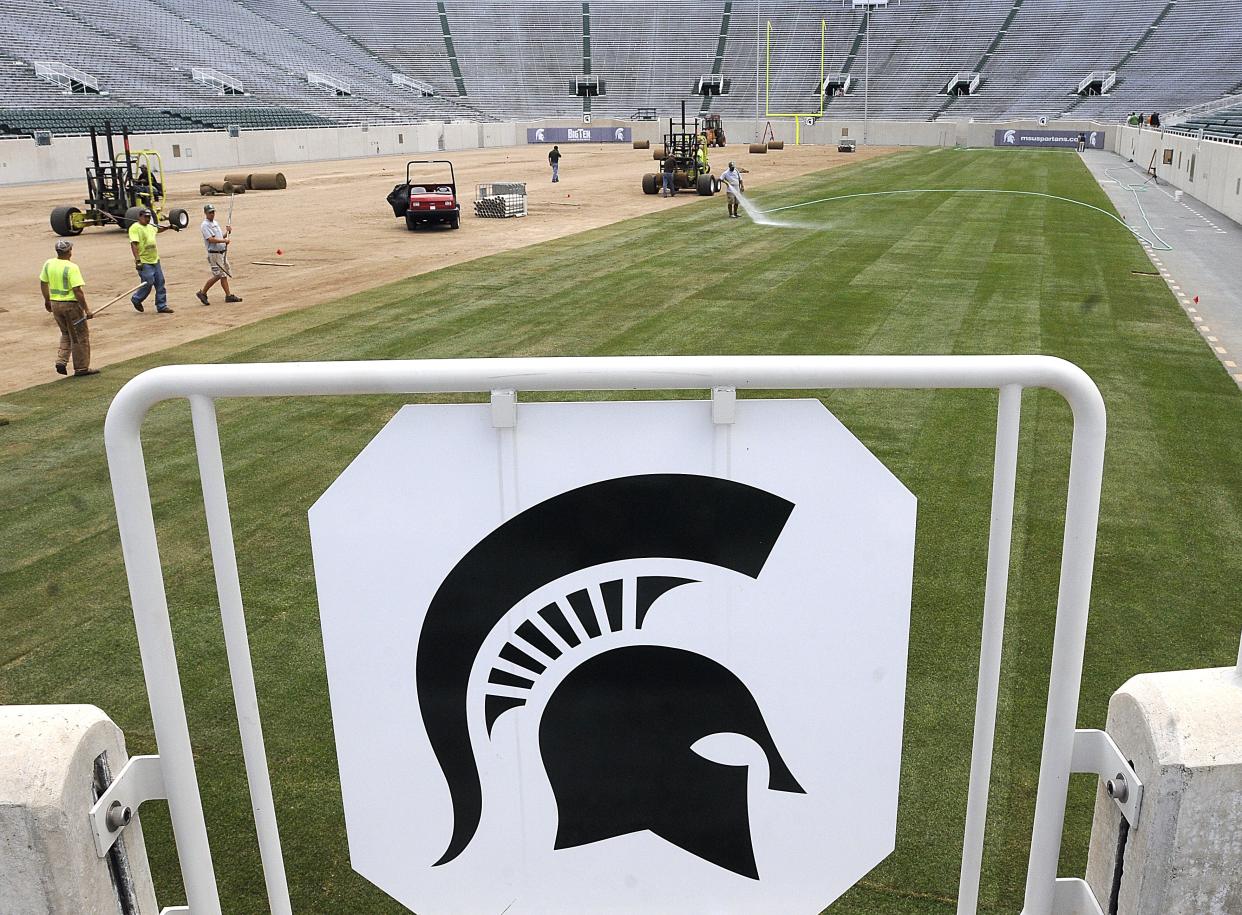Turfgrass facility approved. MSU will make turf for 2026 FIFA World Cup

EAST LANSING — Spartans will have a chance to leave their mark on the 2026 FIFA World Cup after the MSU Board of Trustees unanimously voted Friday to build a FIFA-funded turfgrass testing facility that will make turf for more than a dozen stadiums for the world's most popular sporting event.
Their approval assures agreements for the construction and financing of a turfgrass testing facility and acceptance of the facility as a gift once construction is complete and once work to make the playing surfaces for the world's most-watched sporting event is done.
The Fédération Internationale De Football Association, also known as FIFA, will fund and build the turfgrass testing facility on MSU’s East Lansing campus in an agricultural district on Farm Lane, according to a memo from MSU Vice President for Strategic Infrastructure Planning and Facilities Daniel Bollman. The building will be available for MSU researchers and students to use at the end of the FIFA project.
"We are excited about the work that's going to happen here, excited for our faculty to be able to engage in cutting-edge research to support so many within the turfgrass space," said Kelly Millenbah, dean of the MSU College of Agriculture and Natural Resources, at the Board of Trustees meeting.
MSU and the University of Tennessee will be developing and providing natural grass playing surfaces for 16 North American stadiums and practice facilities as part of the 2026 FIFA World Cup. The work involves developing a turfgrass system that can be used in both domed and outdoor stadiums. while also making the grass playable for up to 60 days after it is installed.
MSU’s renowned turfgrass program over seven decades has boasted research programs involving golf courses, athletic fields and even home lawns, from construction to the management of the turfgrass.
Students who have participated in the program worked on projects, including the installation of a temporary grass surface in the former Pontiac Silverdome for the 1994 World Cup.
The World Cup returns to North America − United States, Canada and Mexico − in 2026 and will become the largest sporting event ever held, Bollman said in his memo. The number of teams in the final is expanding from 32 to 48, which requires more stadiums and practice facilities.
Construction of the turfgrass facility is expected to start in April and be mostly complete by June 2023, according to the memo.
“We got another project, and this one will dwarf everyone that we’ve had," said Trey Rogers, professor of turfgrass management in the College of Agriculture and Natural Resources. "It’s going to take a lot of people’s support and we’ve already had a tremendous amount of support from the university already. I think we’ll make everyone here very proud.”
Contact Mark Johnson at majohnson2@lsj.com. Follow him on Twitter at @ByMarkJohnson.
This article originally appeared on Lansing State Journal: Turfgrass facility approved, MSU to make turf for 2026 FIFA World Cup

